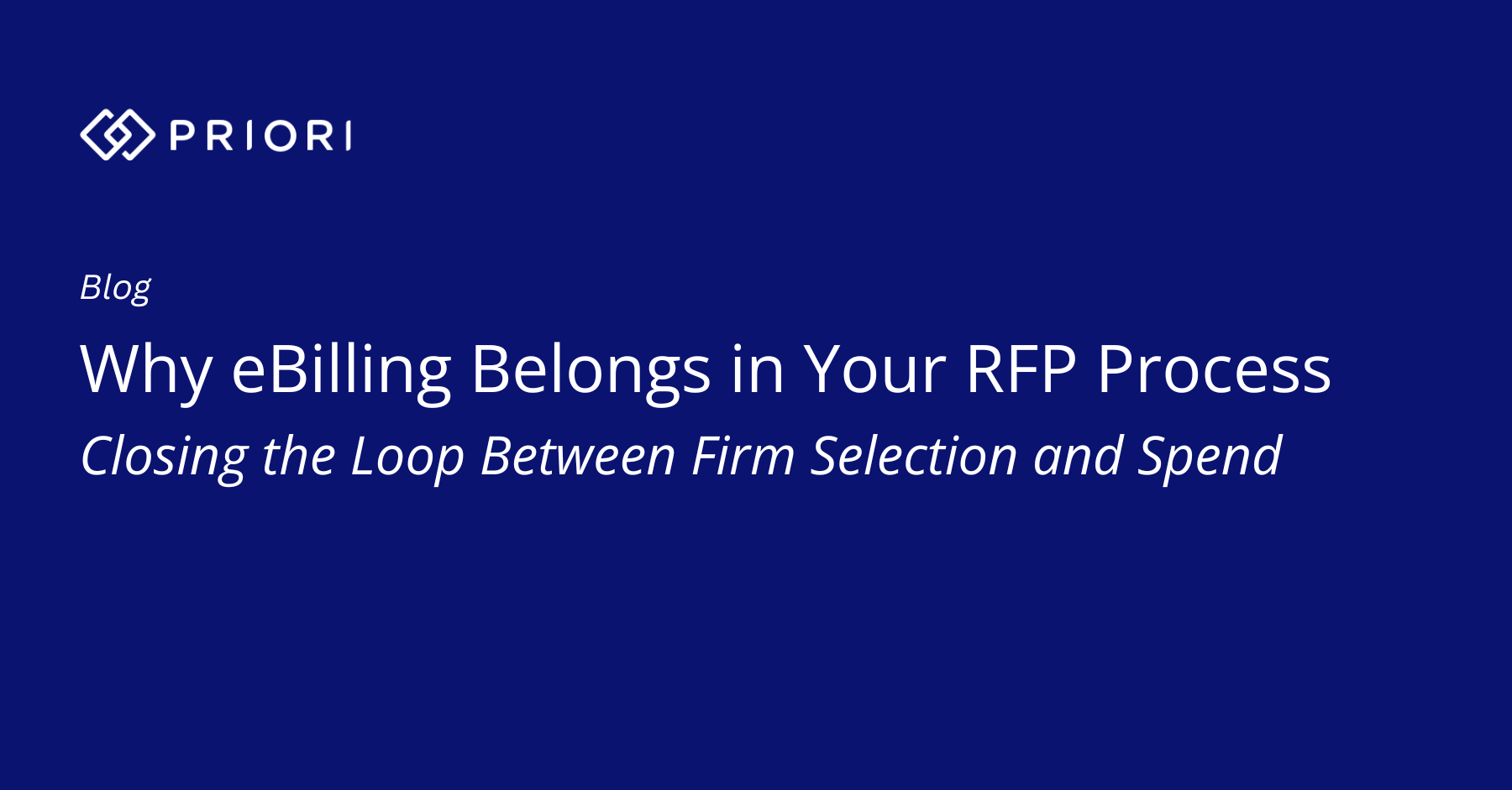Closing the Loop Between Firm Selection and Spend
Most legal departments treat RFPs and billing as separate processes. One team runs the RFP while another tracks the invoices. By the time a matter wraps up, it’s unclear whether the original proposal was followed or if the scope expanded halfway through.
This disconnect creates blind spots: no quote tracking, limited budget enforcement, and delayed oversight. When selection and spend tracking are handled independently, legal teams lose the context that should inform budgeting, accountability, firm relationships, and future hiring decisions. It’s time to rethink the process.
Forward-thinking legal departments are shifting how they manage spend—tracking work-in-progress, flagging budget drift, and connecting RFP decisions to real-world outcomes. It’s not just about reacting to invoices anymore. It’s about acting earlier, with more confidence and control.
Why RFPs Shouldn’t Live in a Vacuum
The RFP process captures critical context: scope, budget, assumptions, and service expectations. But once a firm is selected, that information often disappears into email threads or gets lost in a shared drive.
If budget tracking only begins once invoices arrive, legal teams lose the opportunity to measure spend against original quotes—and to hold firms accountable to what was promised.
True accountability starts by connecting selection criteria to performance outcomes. RFPs should be tightly integrated with billing, matter management, and reporting—not treated as isolated, one-off exercises.
Related: 5 Common Mistakes Legal Teams Make After Firm Selection—and How to Avoid Them
The Risks of Siloed Billing Data
When billing data lives in a different system than the RFP, it’s hard to:
- Compare agreed vs. actual costs
- Detect early signs of scope creep
- Enforce volume discounts or preferred rate terms
- Understand spend in the context of matter complexity or expectations
Without that visibility, legal teams are left stitching together spreadsheets and email threads weeks or months after work is complete—when it’s too late to step in, negotiate scope, or flag potential overages.
Bringing eBilling Into the RFP Process
Linking RFPs and billing may sound complex, but it doesn’t have to be.
Here’s what it looks like in practice:
- Awarded Budgets Captured: After firm selection, the agreed-upon budget is locked into the matter.
- Live Spend Tracking: Invoices are matched to the awarded budget, giving teams an up-to-date view of how spend is pacing—before surprises occur.
- Proactive Alerts: When spend nears budget thresholds, teams receive automated notifications—not just an unpleasant surprise during QBRs.
This helps everyone—legal ops, attorneys, and finance—stay on the same page.
Related: Case Study x GE Aerospace: Modernizing Panel Management and Legal Spend Tracking with Priori
How This Drives Smarter Legal Spend
Connecting the dots between RFP and eBilling isn’t just about visibility. It also:
- Empowers attorneys to engage firms more strategically
- Enhances budget forecasting and performance reporting
- Builds trust with panel firms through consistent processes and feedback loops
With a closed-loop workflow, legal teams can make better decisions matter by matter—and improve outcomes over time.
RFP + eBilling = Closed Loop Control
You’ve already done the hard part by selecting the right firm. Don’t lose visibility once the work begins.
Integrated eBilling is the missing link between firm selection and financial performance. When budgets, quotes, and billing live in the same workflow, legal teams gain real-time oversight without overhauling their systems.
This is where Priori stands out. By connecting awarded quotes to real-time billing data—regardless of your eBilling provider—our platform gives legal teams a powerful way to track budgets, monitor performance, and hold firms accountable. As one client put it, “This is the key differentiator.”
Want to see it in action? Priori’s eBilling integration and Next Steps Flow help you connect RFPs to real-world spend—without changing your billing systems.
